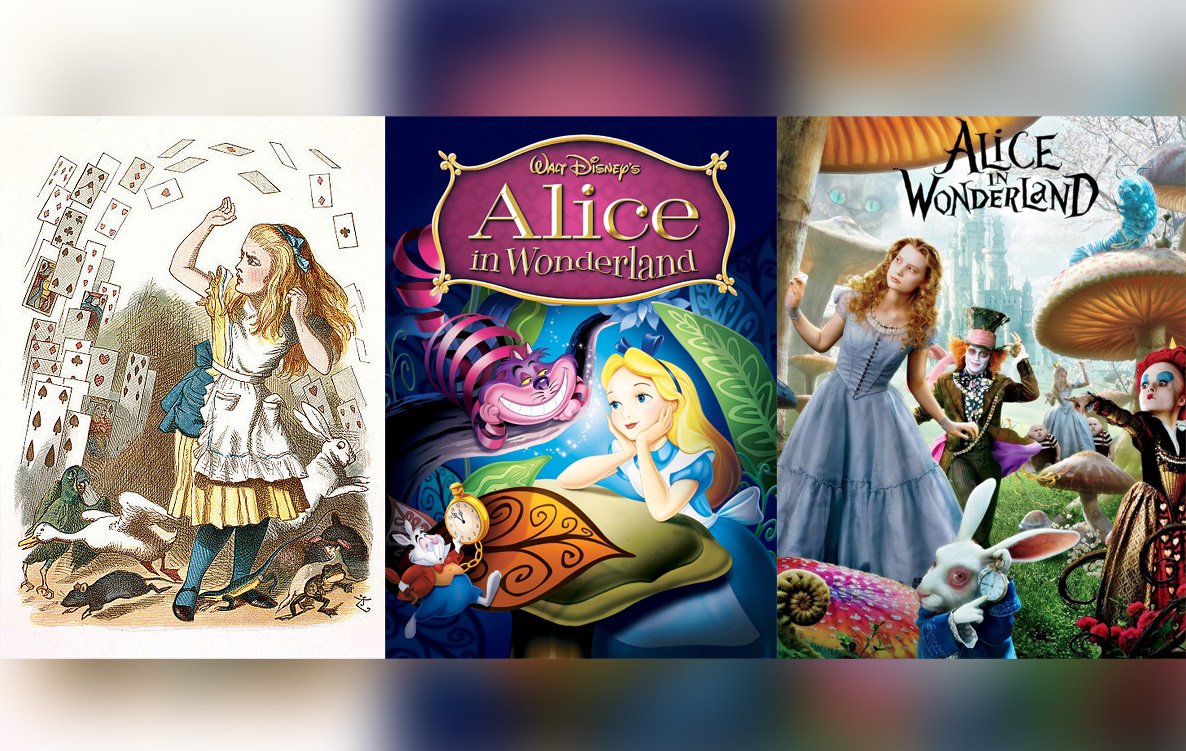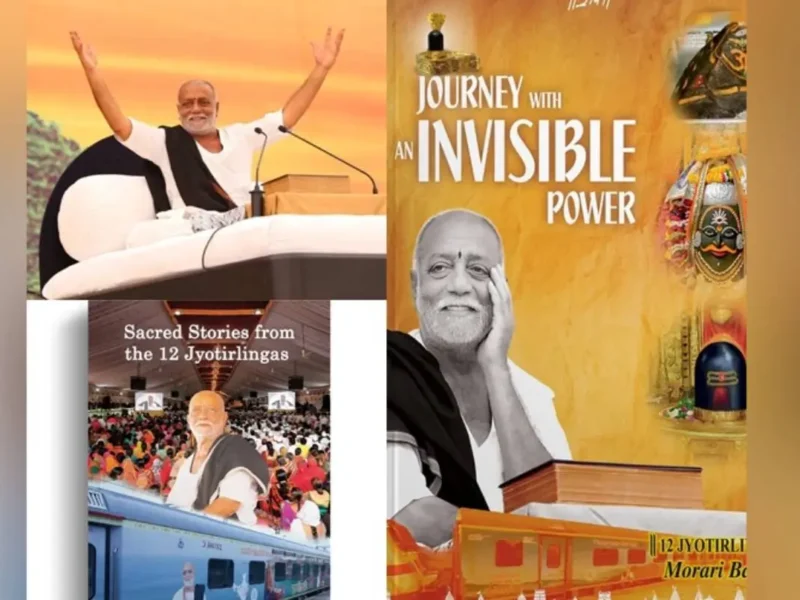
Alice In Wonderland’s Continuing Cross-Cultural Relevance
By VIKAS DATTA
It was a whimsical tale, spun on a tranquil summer afternoon boat ride in 1862, to entertain three young girls. However, it went on to become an enduring literary and cultural landmark, influencing renowned figures such as James Joyce, Vladimir Nabokov, Salvador Dali, Walt Disney, John Lennon, Pink Floyd, Jefferson Airplane, Aerosmith, Lady Gaga, and Tim Burton, among others.
Not bad for a story that revolves around a bored yet determined girl who follows a nervous rabbit, lamenting that he is running late, into a bizarre underground world. She then climbs through a mirror into a parallel world arranged like a chessboard.
During her adventures in these strange and illogical realms, she encounters iconic characters such as the White Rabbit, the Cheshire Cat, the King and Queen of Hearts, the Gryphon, the Jabberwock, Tweedledee and Tweedledum, Humpty Dumpty, and the White Knight, among many others.
‘Alice’s Adventures in Wonderland’ (1865), commonly known as ‘Alice in Wonderland,’ and its sequel ‘Through the Looking-Glass, and What Alice Found There’ (1871-2), often referred to as ‘Through the Looking-Glass,’ hold a prominent position both as standalone works and as sources of inspiration for adaptations in various media.
The popularity of these two books, authored by Charles Luttwidge Dodgson (1832-98), an Oxford academic and clergyman writing under the pen name Lewis Carroll, is evident from the fact that they have never gone out of print since their initial release. They have been translated into nearly hundreds of languages, with ‘Alice in Wonderland’ alone having been translated into at least 175 languages, including various dialects and even constructed languages like Klingon. There are multiple editions of the books in many languages, with over 1,200 versions in Japanese alone. Nabokov was the second person to translate ‘Alice in Wonderland’ into Russian, while ‘Through the Looking Glass’ has been translated into at least 65 languages.
As mentioned earlier, both stories originated from a tale narrated during a boating trip in May or July 1862. The captivating story enthralled its audience, consisting of 10-year-old Alice and her sisters Lorina, 13, and Edith, 8. Alice, particularly captivated by the tale, requested Dodgson to write it down for her.
Dodgson began writing the story the very next day and shared the plot with Alice during another boating trip a month later. In November of that year, he commenced serious writing. He conducted extensive research on the natural history of the featured animals and sought the opinions of other children before presenting Alice with a handwritten manuscript of over 15,500 words in November 1864.
Even then, Dodgson continued expanding the work for publication, adding episodes featuring the Cheshire Cat and the Mad Tea Party. The final version, published in November 1865 with illustrations by John Tenniel, a long-standing cartoonist with Punch magazine (and the first illustrator to be knighted for his work), amounted to 27,500 words.
The plots of the stories are widely known and need not be reiterated here. However, they should not be dismissed merely as escapist fantasies. Alice’s adventures mark a paradigm shift in children’s literature. Not only were they the first examples of children’s books primarily meant to entertain rather than impart moral lessons, but the way Alice enters fantasy worlds has inspired almost every subsequent heroine in the genre, such as Dorothy in the Land of Oz, Wendy in Neverland (Peter Pan), and the Pevensie siblings in C.S. Lewis’ Narnia series.
Like any classic literary work, they can convey different meanings to different people. Literary experts have identified numerous allusions to Victorian political and academic matters, many of which are now forgotten, as well as abundant wordplay and puns. Mathematicians have deciphered various mathematical and logical references and concepts in the narrative. One post-structuralist even used Humpty Dumpty’s dialogues to explain a concept, while chess experts have discovered a new problem outlined in ‘Through the Looking Glass’.
The distorted worlds of dreams, with their unsettling “logic,” and the concluding lines of “Alice…” illustrating how the world can impact our dreams, emerged at a time when Sigmund Freud was not even ten years old.
The impact of Alice’s adventures was not confined to inspiring retellings in the fantasy genre alone. Several characters, in addition to the eponymous heroine, have been incorporated into other stories. For instance, the Cheshire Cat appears in Jasper Fforde’s Thursday Next series. The character, structure, and form of the story have also been freely adapted to teach subjects such as grammar, orchestras, quantum mechanics, and to satirize contemporary politics and economics.
During Carroll’s lifetime, Anna M. Richards released ‘A New Alice in the Old Wonderland’ (1895), in which a different Alice travels to Wonderland and encounters many original characters and others. The first parody, ‘Gladys in Grammarland’ (1897), features fantastical characters aiding a somewhat negligent girl with her homework.
Later on, H.H. ‘Saki’ Munro’s ‘The Westminster Alice’ (1902) depicts Alice meeting various British politicians of the time, including the ‘Ineptitude’ occupying 10 Downing Street, among other curious characters. It becomes evident that the lack of logic or sense is not exclusive to Wonderland. Numerous parodies have emerged since then.
Alice’s adventures have been extensively retold, parodied, and have influenced works across various media, including films (Disney’s animated version and Burton’s live-action adaptation being the most famous), TV and radio shows, opera, plays, paintings, music, comics, manga, video games, and even advertising. The work has inspired several paintings by Dali and has made appearances in Joyce’s ‘Finnegan’s Wake’ (“Alicious, twinstreams twinestraines, through alluring glass or alas in jumboland”).
Additionally, Lennon’s songs “I am a Walrus” and “Lucy in the Sky with Diamonds” were influenced by the imagery of Alice. Other musical references include Aerosmith’s “Sunshine” and Tom Petty’s “Don’t Come Around Here No More,” as well as Jefferson Airplane’s psychedelic hit “White Rabbit,” Pink Floyd’s “Country Song,” and Lady Gaga’s “Alice” from her album ‘Chromatica’ (2020), among many others.
Who says children’s books are solely meant for kids?




